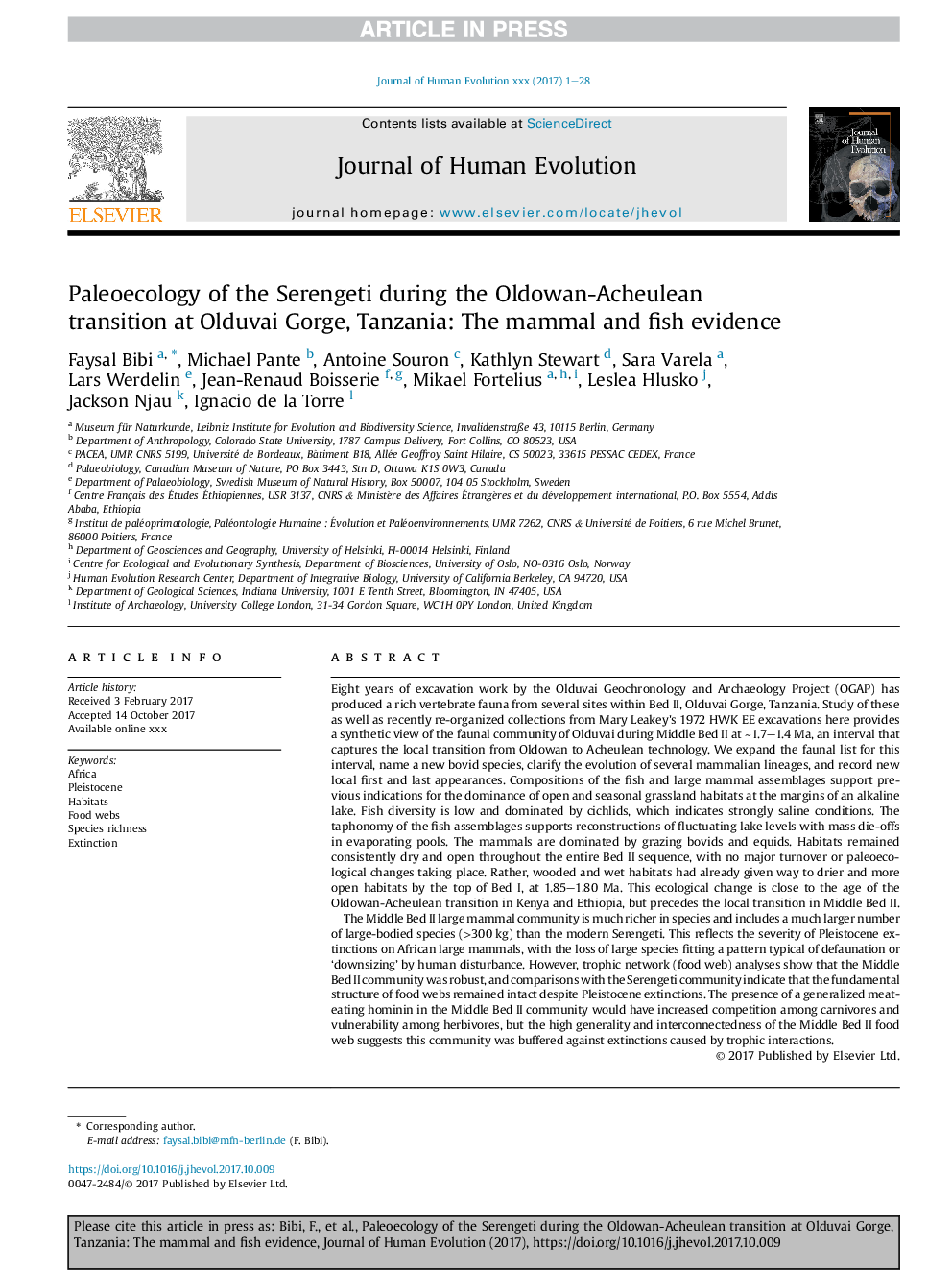| Article ID | Journal | Published Year | Pages | File Type |
|---|---|---|---|---|
| 8887235 | Journal of Human Evolution | 2018 | 28 Pages |
Abstract
The Middle Bed II large mammal community is much richer in species and includes a much larger number of large-bodied species (>300Â kg) than the modern Serengeti. This reflects the severity of Pleistocene extinctions on African large mammals, with the loss of large species fitting a pattern typical of defaunation or 'downsizing' by human disturbance. However, trophic network (food web) analyses show that the Middle Bed II community was robust, and comparisons with the Serengeti community indicate that the fundamental structure of food webs remained intact despite Pleistocene extinctions. The presence of a generalized meat-eating hominin in the Middle Bed II community would have increased competition among carnivores and vulnerability among herbivores, but the high generality and interconnectedness of the Middle Bed II food web suggests this community was buffered against extinctions caused by trophic interactions.
Related Topics
Life Sciences
Agricultural and Biological Sciences
Ecology, Evolution, Behavior and Systematics
Authors
Faysal Bibi, Michael Pante, Antoine Souron, Kathlyn Stewart, Sara Varela, Lars Werdelin, Jean-Renaud Boisserie, Mikael Fortelius, Leslea Hlusko, Jackson Njau, Ignacio de la Torre,
